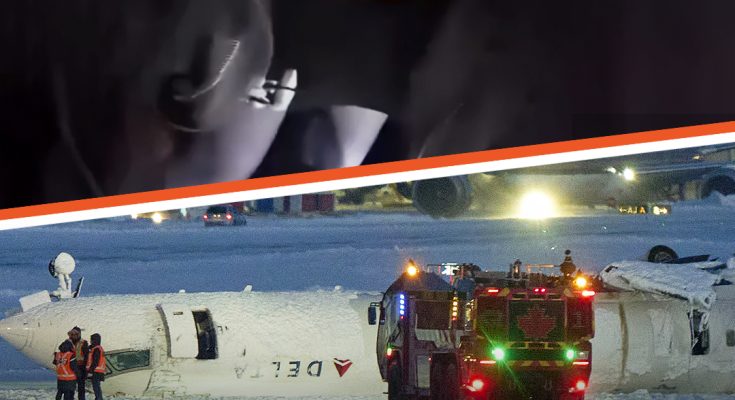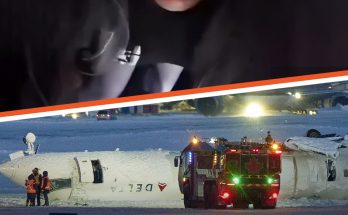A recent plane crash ended in an unexpected outcome. Survivors recounted their harrowing experience, and experts weighed in on what happened during the incident.
A Delta Airlines plane from Toronto crashed on the runway at Pearson International Airport on the afternoon of February 17, 2025. A woman, trapped upside down, briefly recorded a video from inside the plane.
The aircraft, Endeavor Flight 4819, had been arriving from Minneapolis/St. Paul when the incident occurred. The crash landing left the aircraft upside down on the tarmac, with its tail and one wing completely torn off.
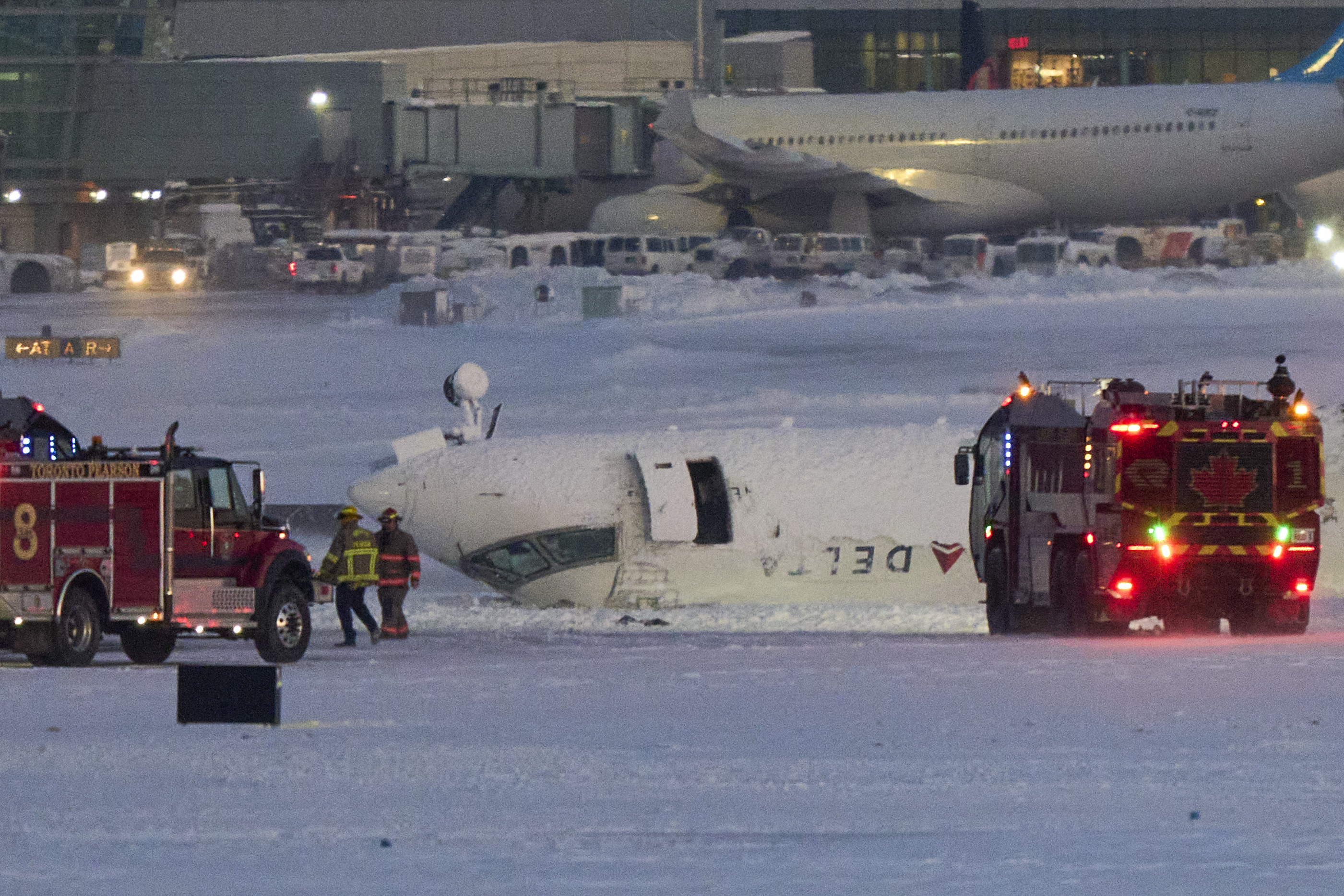
A Delta airlines plane pictured after crashing upon landing at Toronto Pearson Airport on February 17, 2025, in Toronto, Ontario. | Source: Getty Images
Authorities reported strong westward winds, reaching speeds of 29 miles per hour with gusts up to 38 miles per hour, around 2:15 p.m.—the time of the crash. Toronto had been grappling with drifting snow after back-to-back snowstorms in recent days.
Flightradar24, an aviation tracking website, noted that weather advisories for Pearson International Airport at the time warned of “a gusting crosswind and blowing snow.”
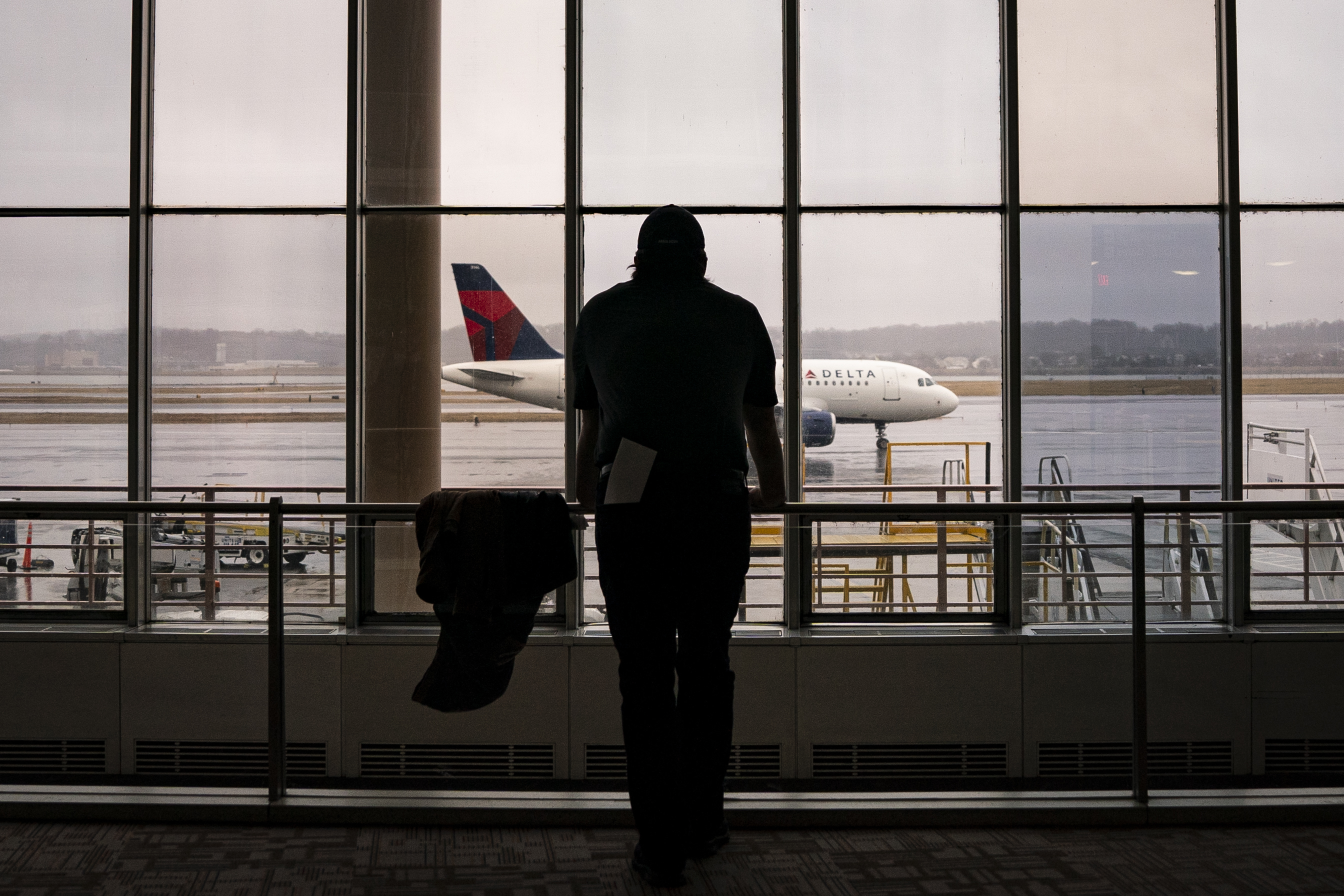
A worker looks out at a passing Delta Airlines plane on February 6, 2025, in Arlington, Virginia. | Source: Getty Images
Meanwhile, Airport Fire Chief Todd Aitken provided an update regarding the runway’s condition, “What we can say is the runway was dry and there was no cross-wind conditions.”
The moments immediately following the crash were captured in audio recordings from the airport. “This airplane just crashed,” an air traffic controller disclosed.
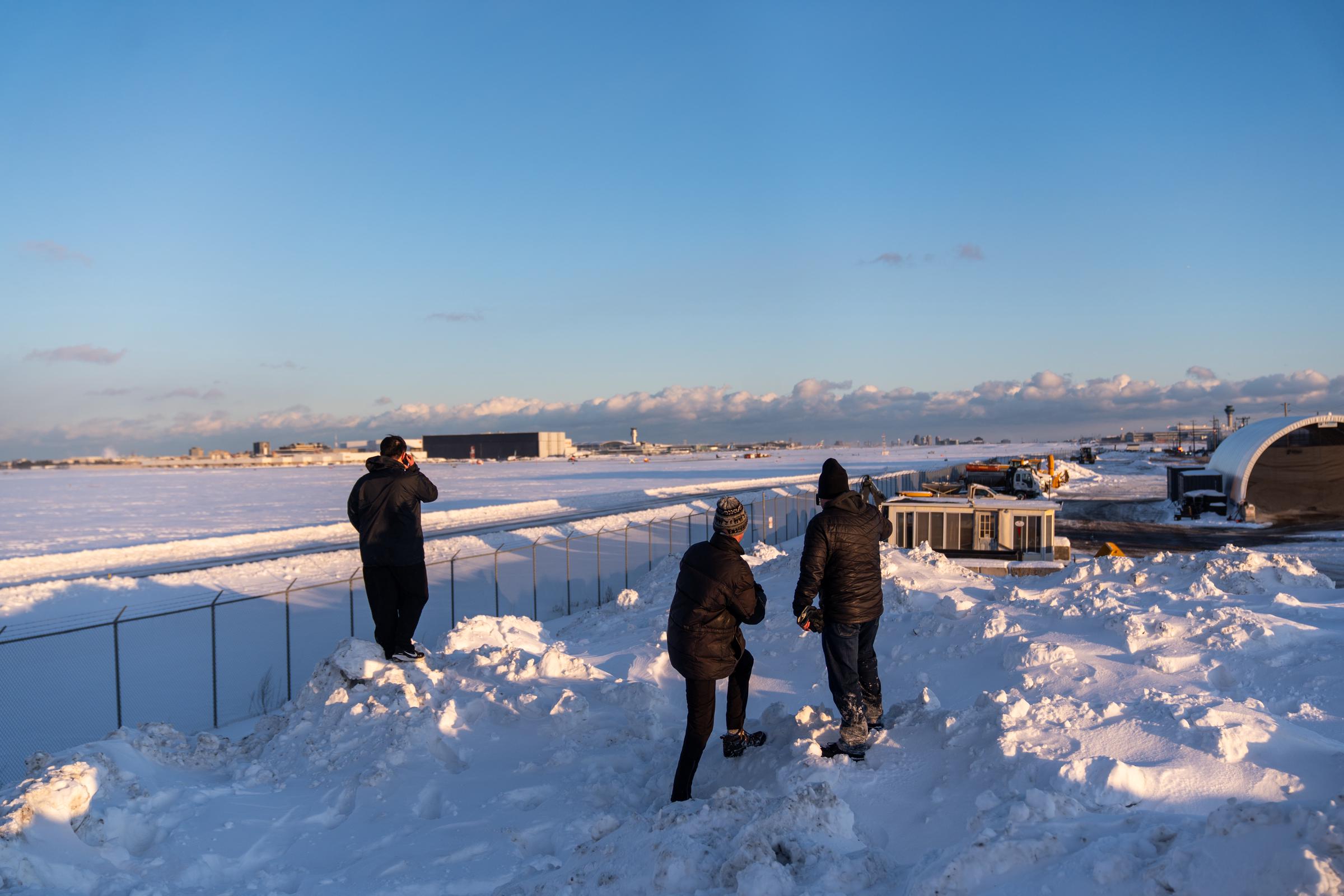
Bystanders look over the scene of a Delta Airlines plane crash on February 17, 2025, in Toronto, Canada. | Source: Getty Images
Mere seconds later, the severity of the crash became clearer. “The aircraft there’s upside down and burning [sic],” a controller reported. The recordings also noted that passengers were seen walking outside the plane just minutes after the impact.
As the situation unfolded, Delta Airlines addressed the public through their official X page, sharing an update on the passengers’ conditions. According to the statement, initial reports indicated no fatalities, with 18 injured passengers transported to area hospitals. It also emphasized that the primary focus was on supporting those affected.
Initially, Toronto Pearson Airport CEO Deborah Flint initially reported 17 injuries following the crash. However, during a subsequent briefing, Aitken provided an update, stating that “one additional passenger” had been taken to the hospital, bringing the total to 18.
Ornge, the province’s air ambulance service, initially reported that three individuals, including a child, had suffered critical injuries. However, during a later update, GTAA officials stated they had no information confirming any critical injuries. In total, 80 people were onboard the plane — 76 passengers and four crew members — who managed to escape the wreckage.
After the crash, passengers shared their firsthand experiences of the terrifying moments onboard. Among them was Pete Koukov, a professional skier from Colorado, who described the chaos during the landing.
“Nothing seemed amiss during the plane’s final descent. The second that the wheels hit the ground, then everything happened. The next thing I know, we’re sideways,” the 28-year-old recalled in an interview.
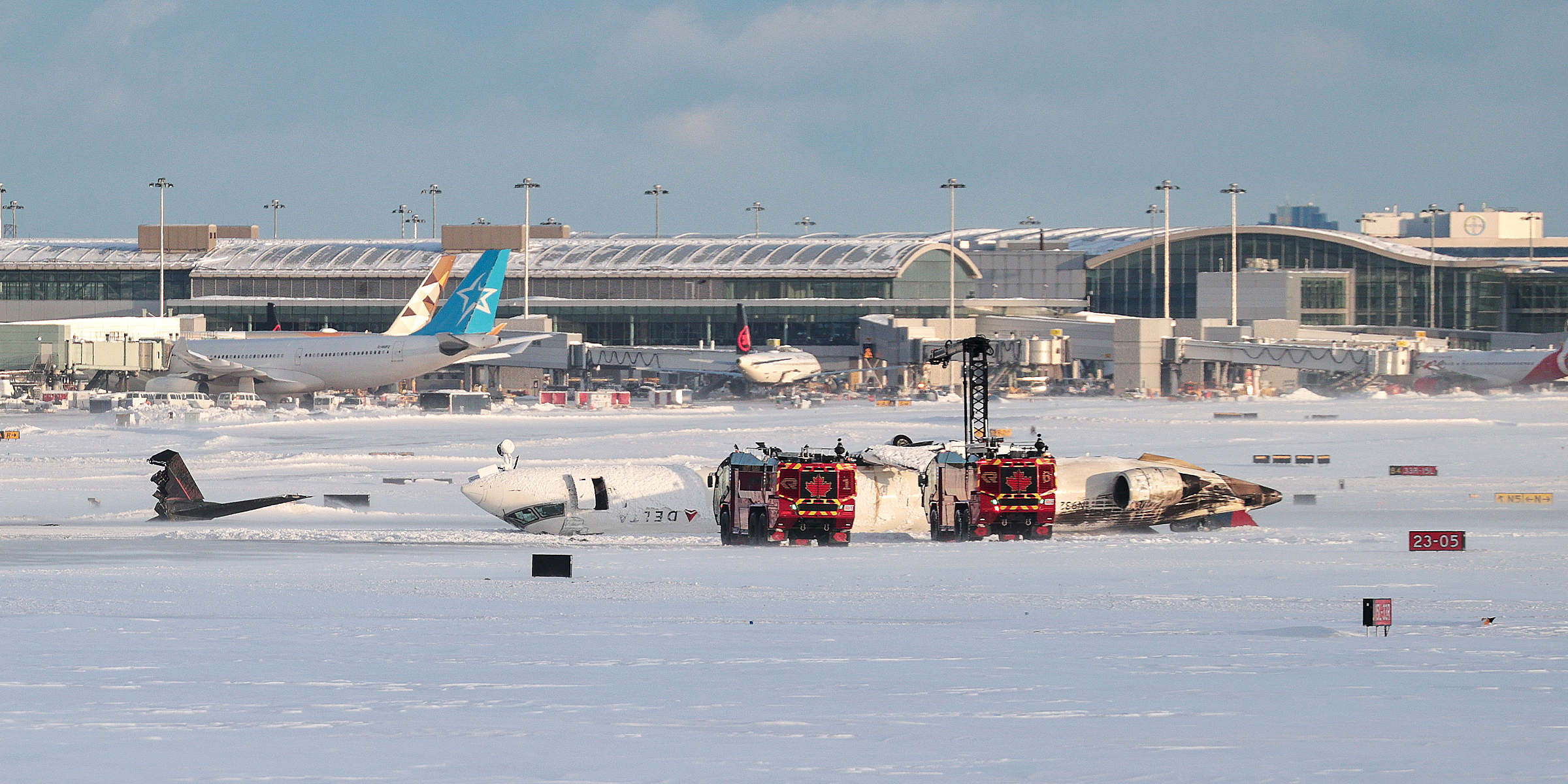
Emergency personnel work at the scene of a Delta Airlines plane crash on February 17, 2025, in Toronto, Canada. | Source: Getty Images
The confusion intensified in an instant. After the aircraft came to a standstill, “we were upside down hanging like bats,” Koukov divulged. Seated by a window on the opposite side of the plane, he saw flames as the plane skidded across the runway on its right side before coming to rest upside down.
He quickly unbuckled his seatbelt and lowered himself to the floor, which had become the ceiling. According to him, people were panicking during the chaotic moments after the crash. Flight attendants helped passengers crawl through open exit doors, urging them to leave belongings behind, though his video shows some exiting with bags in tow.
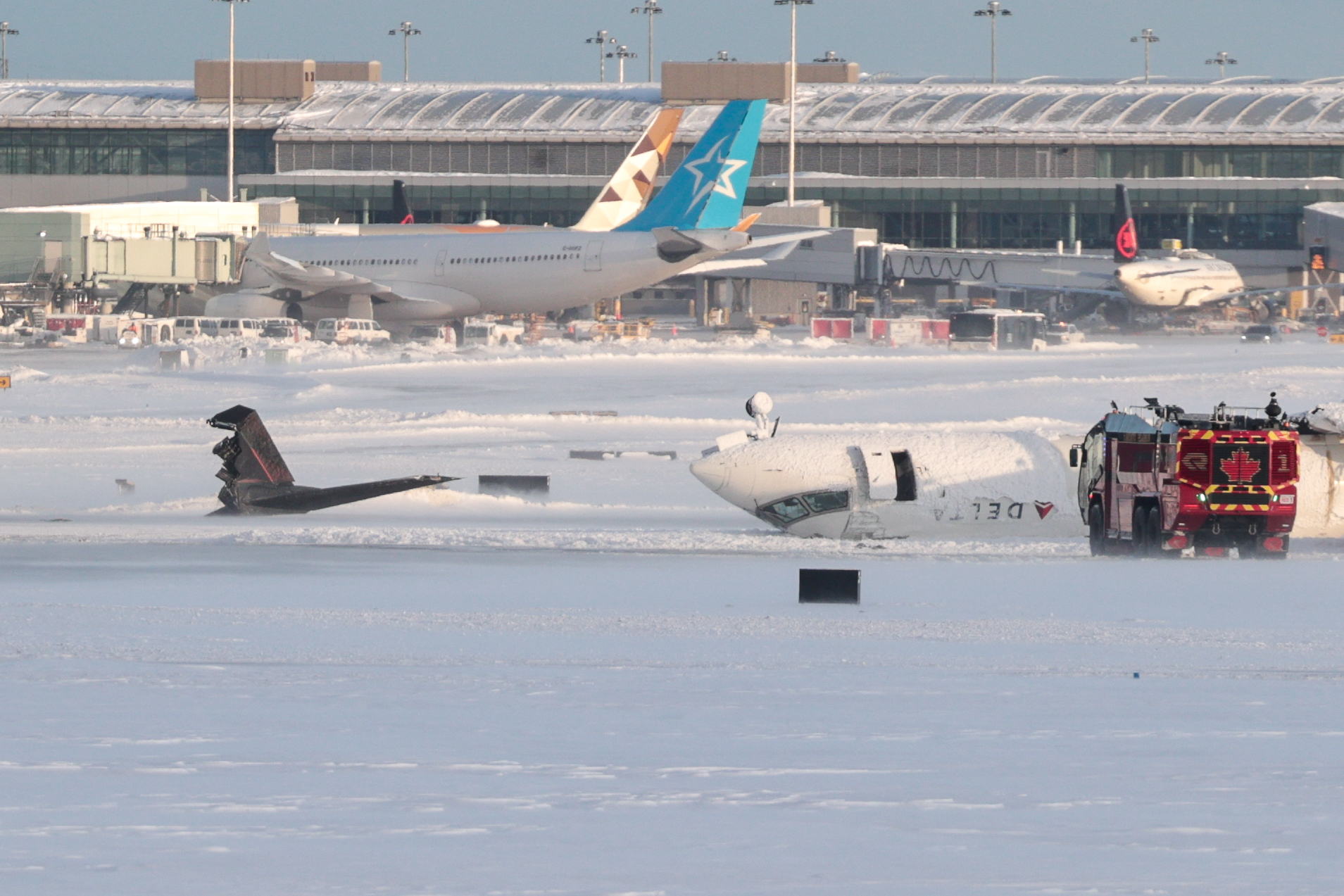
Delta airplane seen overturned on the runway after crashing while landing on February 17, 2025, in Toronto, Canada. | Source: Getty Images
As passengers made it safely to the ground, a sense of relief set in for Koukov. He later shared that he felt fortunate to hug the stranger sitting next to him, knowing they were both safe, and to embrace his friends who came to pick him up from the airport.
That sense of gratitude was shared by other passengers as well, including John Nelson, who described the experience as surreal, “It’s amazing that we’re still here,” in an interview.
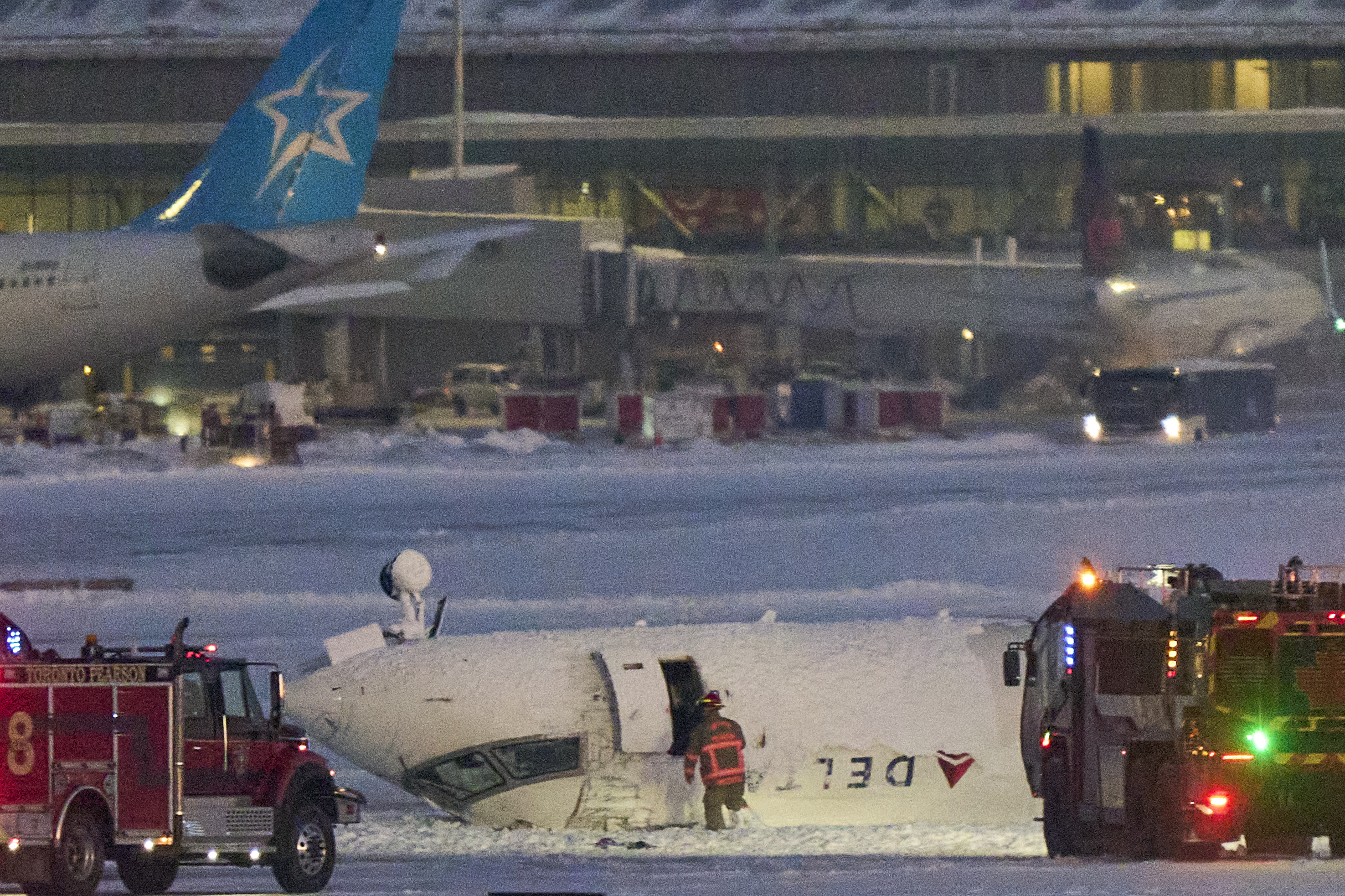
A Delta airlines plane sits on its roof after crashing upon landing on February 17, 2025, in Toronto, Canada. | Source: Getty Images
Nelson recalled the flight feeling routine as it approached Toronto, though he did notice strong winds and snow covering the runway. When the plane hit the ground, he said, “it was just a super hard — it hit the ground, and the plane went sideways.”
Moments later, he saw “a big fireball” through the left-side window. Seated in row 10 just ahead of the wing, Nelson and his seatmate were left hanging upside down after the crash.
They unbuckled their seatbelts, dropped to the ceiling, and quickly moved toward the exit as the air filled with the sharp scent of jet fuel. They tried to get out as quickly as possible, recalling that the smell of jet fuel lingered even afterward.
The terrifying moments didn’t end there. In a Snapchat video, passenger Ashley Zook captured the aftermath of the crash, saying, “I was just in a plane crash. Oh my God.”
In the wake of the crash, experts noted the outcome could have been far more devastating without modern safety advancements. David Soucie, a CNN safety analyst and former FAA safety inspector, explained that improvements in aircraft design and seat safety likely prevented the crash from being “much worse.”
“Everything that could go wrong went wrong, yet 80 people survived the accident,” Soucie said, comparing the incident to a 1987 crash in Denver where a DC-9 flipped in similar conditions, killing 28 people.
He noted that stronger, more secure seats played a significant role in protecting passengers during the Toronto crash. Soucie also pointed out a key design improvement: the wings of the Delta aircraft broke away upon impact, as intended.
He explained that the wing is designed to break away upon impact to prevent it from ripping the fuselage in half, adding that this design feature likely saved many lives.
The effectiveness of the aircraft’s safety features was no coincidence. The Bombardier CRJ900 was built to withstand hard landings and enable quick evacuations—an essential factor in saving all 80 lives onboard.
Peter Goelz, a CNN aviation analyst and former NTSB managing director, explained that a strong gust of wind hit the plane during touchdown, causing it to tip and tear off a wing.
The impact ignited a fire in the wing’s fuel cells, while the tail broke off as designed to minimize damage. “The airplane was designed to take a hit like this,” Goelz said.
The 18 reported injuries included passengers left hanging upside down in their seats, their belts preventing more serious harm. Goelz emphasized the importance of keeping seat belts snugly fastened, noting that it could save lives.
He also praised the crew’s “extraordinary” response, noting that their emergency training paid off. “This is the test, and they passed it with flying colors,” he stated.
Goelz predicted a quick investigation, expecting the Transport Safety Board of Canada to release a preliminary report within 30 days that could provide key insights into the crash — an effort that will be assisted by a team of American investigators from the Federal Aviation Administration..
The aircraft itself was about 16 years old and was well within the typical lifespan for passenger jets, which often operate for two to three decades. Cirium, an aviation data company, reported that more than 380 CRJ900s are in service globally and noted the model’s long-standing reputation for safety.
While the CRJ900 has a solid safety record, the Toronto crash is part of a recent wave of aviation incidents that have unsettled travelers worldwide. In December 2024, a crash in South Korea claimed 179 lives, followed by a fatal midair collision near Washington in January 2025 that left 67 people dead.
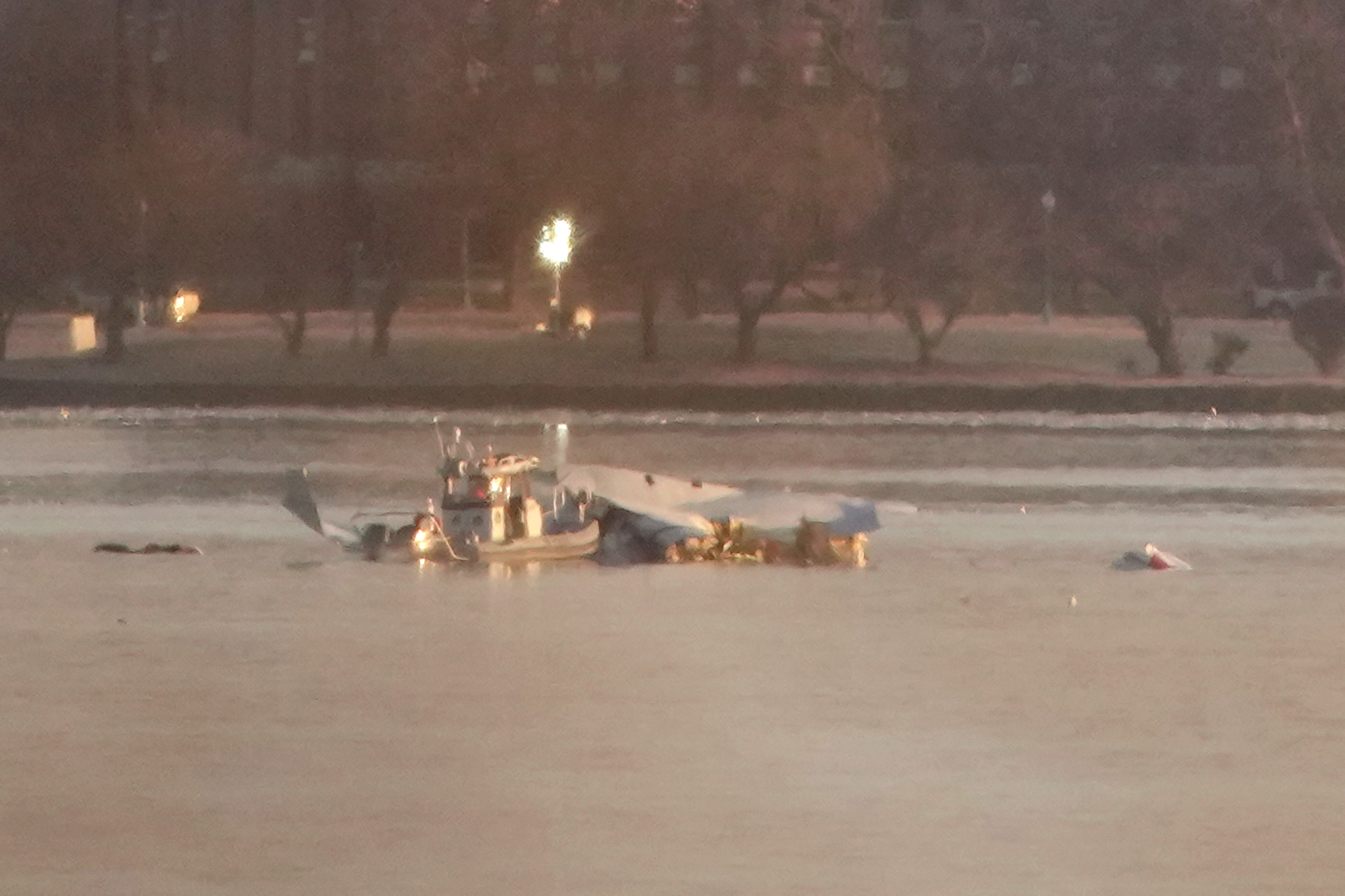
Emergency response units search the crash site on January 30, 2025, in Arlington, Virginia. | Source: Getty Images
The crash near Washington, D.C. became the most significant commercial aviation disaster in the United States since 2009. On January 29, a midair collision occurred near Reagan National Airport when American Airlines Flight 5342, operated by PSA Airlines, struck a U.S. Army Black Hawk helicopter.
The jet had been en route from Wichita, Kansas, when it crashed above the Potomac River, according to the FAA. Defense officials later confirmed the helicopter was on a training mission at the time.
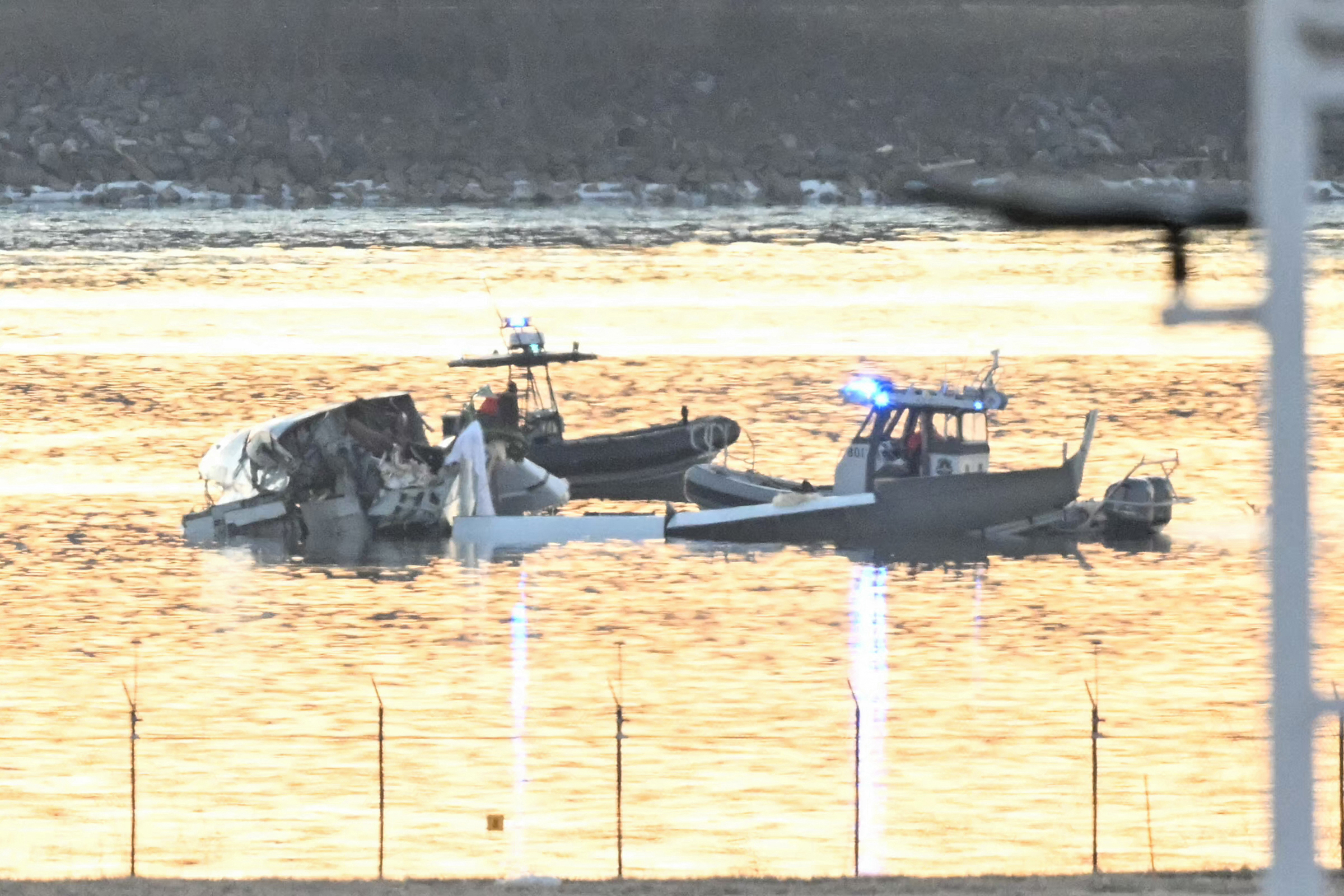
Part of the wreckage pictured as rescue boats search the waters on January 30, 2025, in Washington, D.C. | Source: Getty Images
The collision disrupted air traffic, forcing 19 flights to divert to Dulles International Airport. Air traffic controllers had instructed the Black Hawk to pass behind the approaching jet moments before the crash, but recordings captured their shock as communication suddenly turned to chaos.
A video recorded by EarthCam showed the aircraft and helicopter colliding midair before erupting into flames. The incident added to growing concerns about aviation safety.
The crash in Toronto highlights the unpredictable nature of air travel, even with modern safety advancements. As investigators work to uncover the cause, the survival of all 80 passengers highlights the importance of well-engineered aircraft and trained crews in life-threatening situations.
